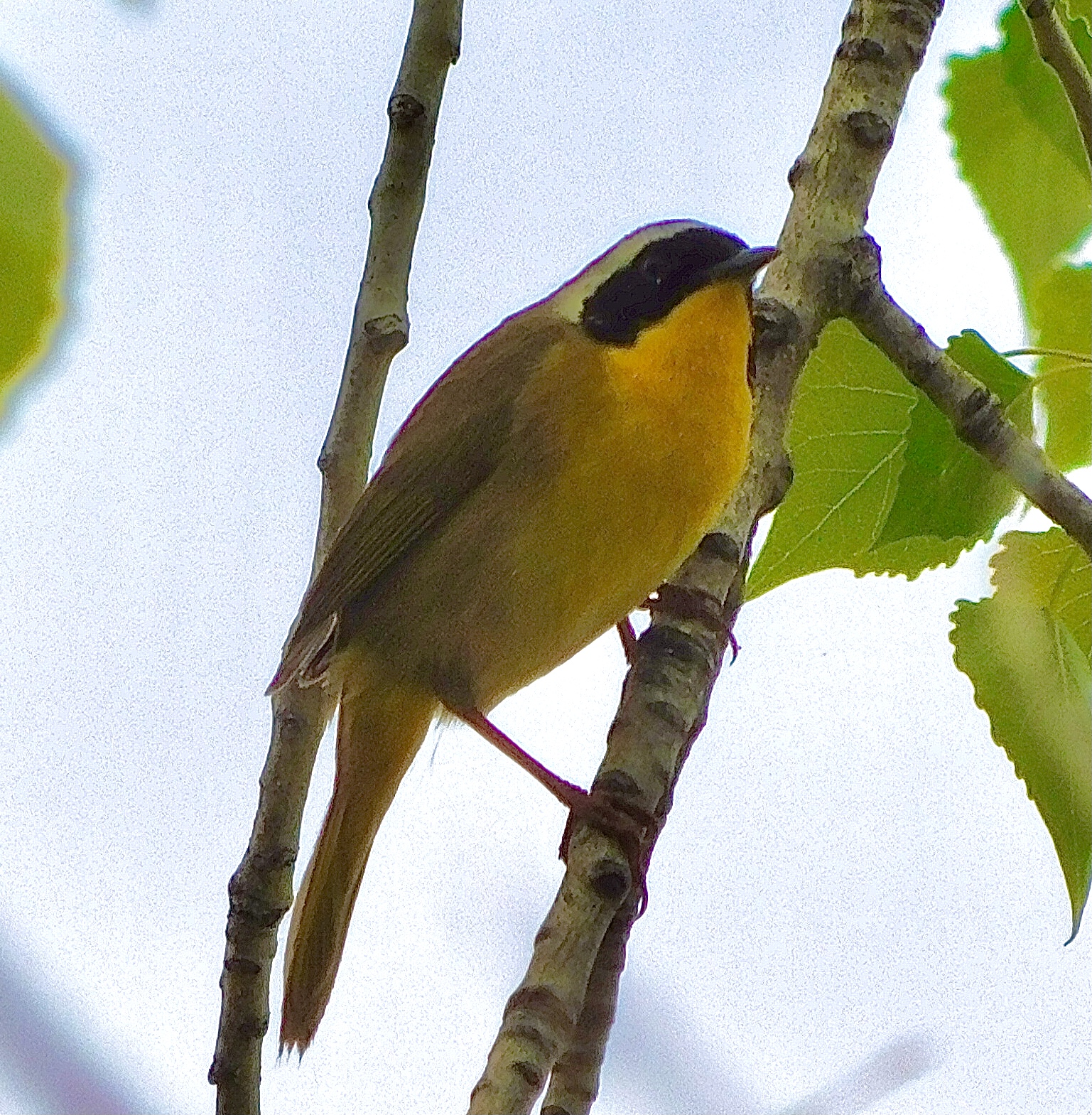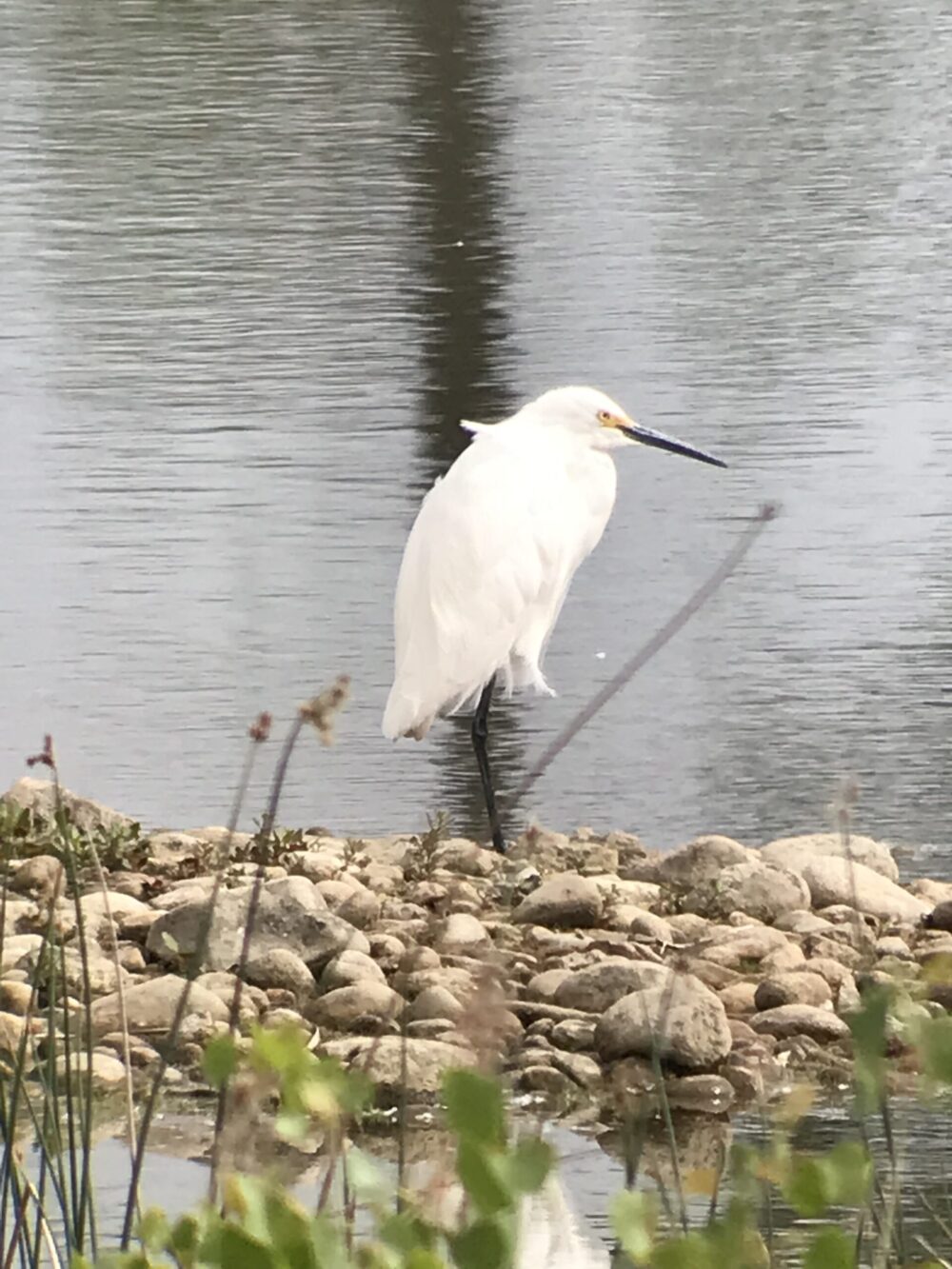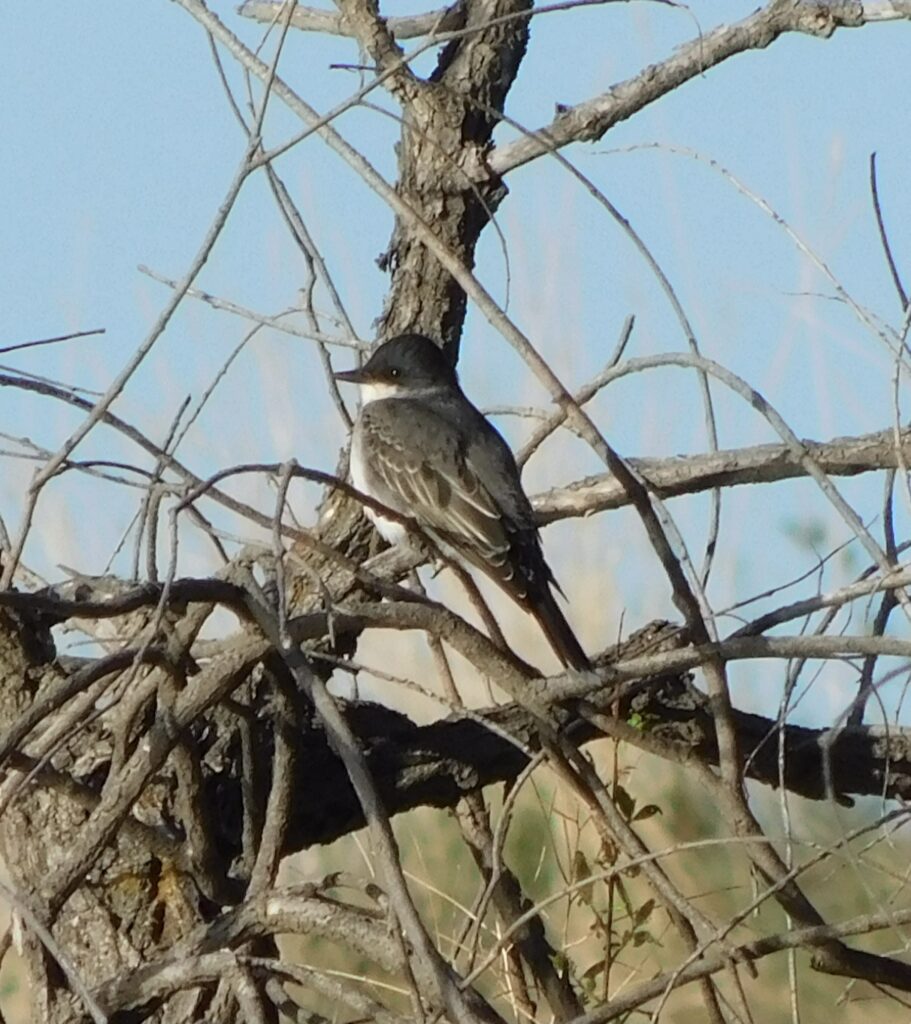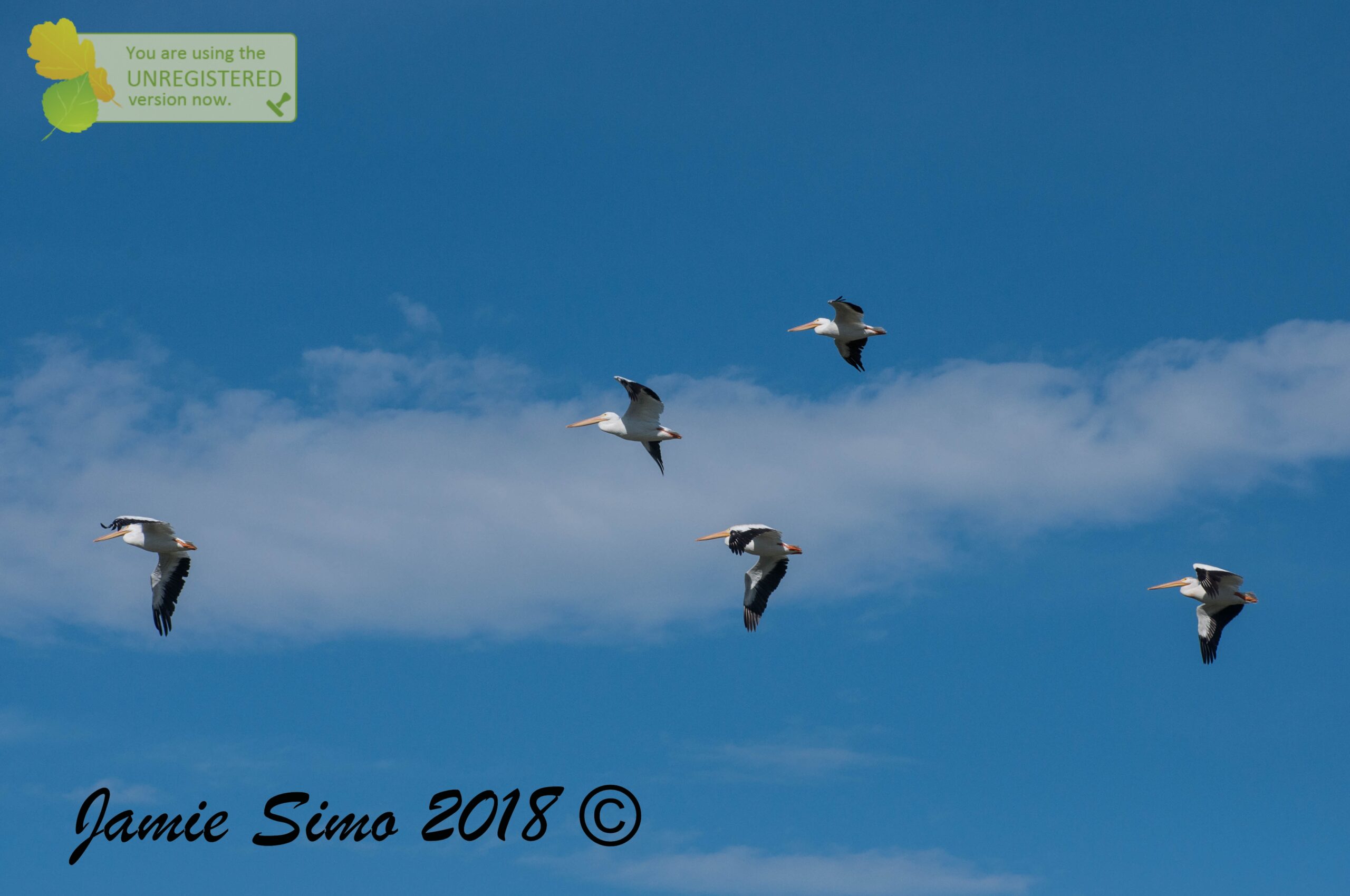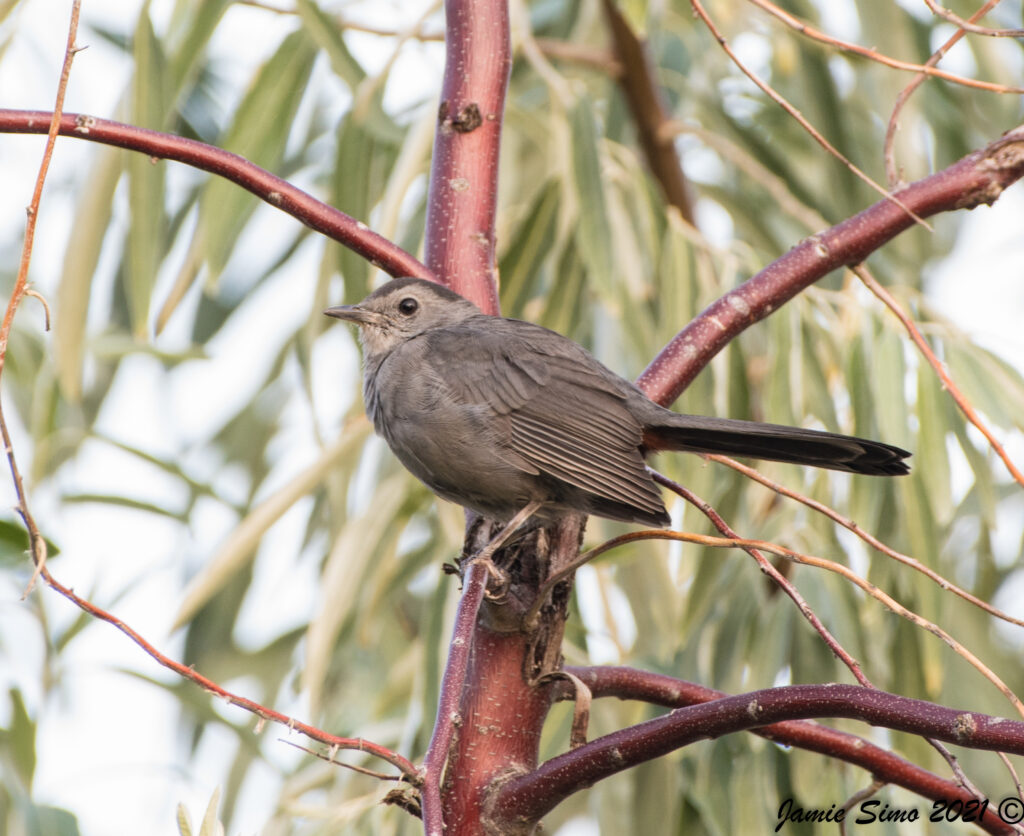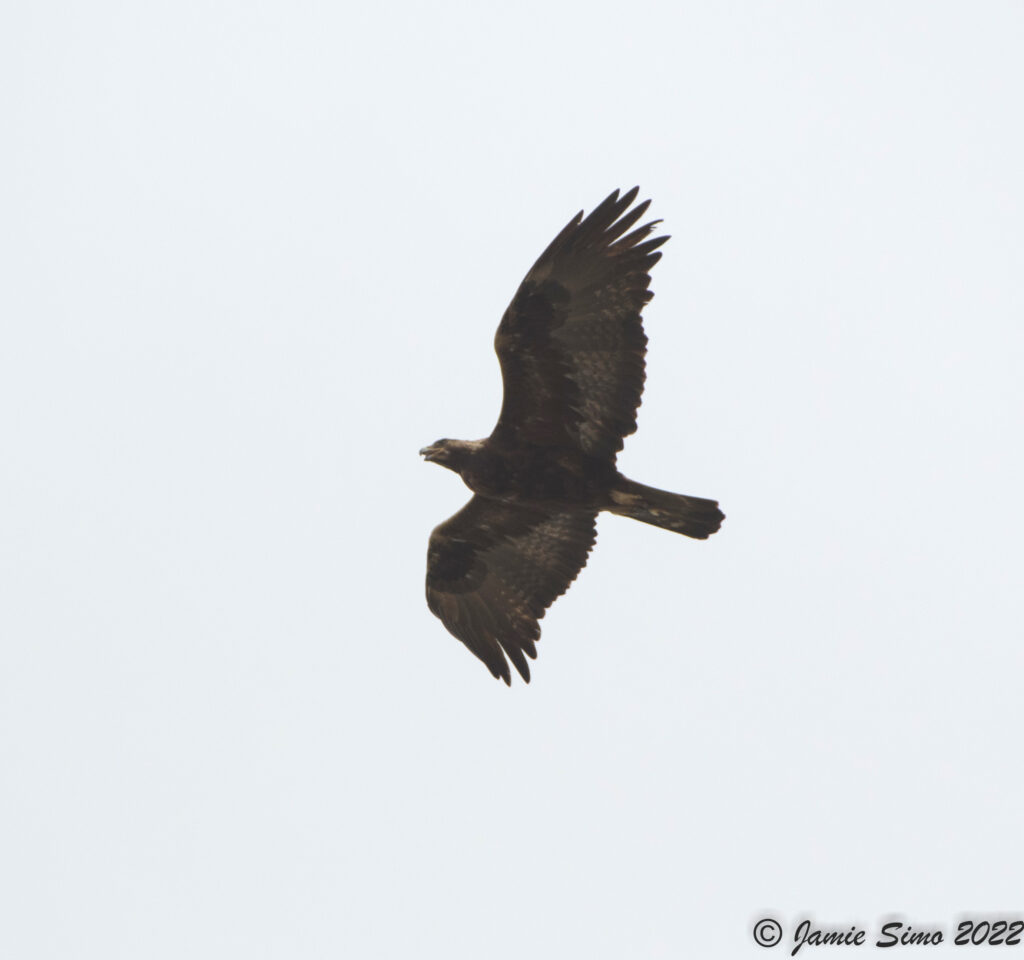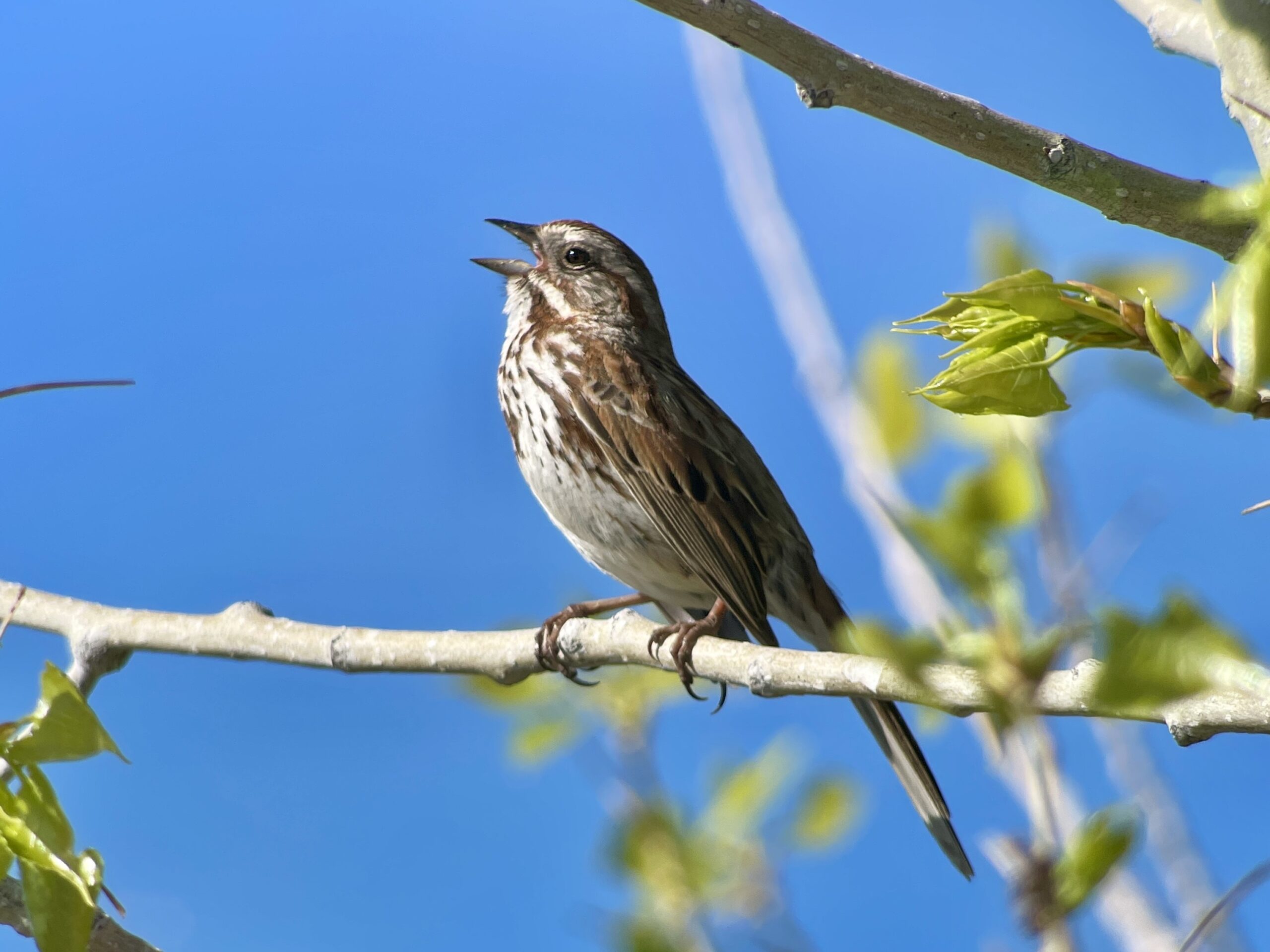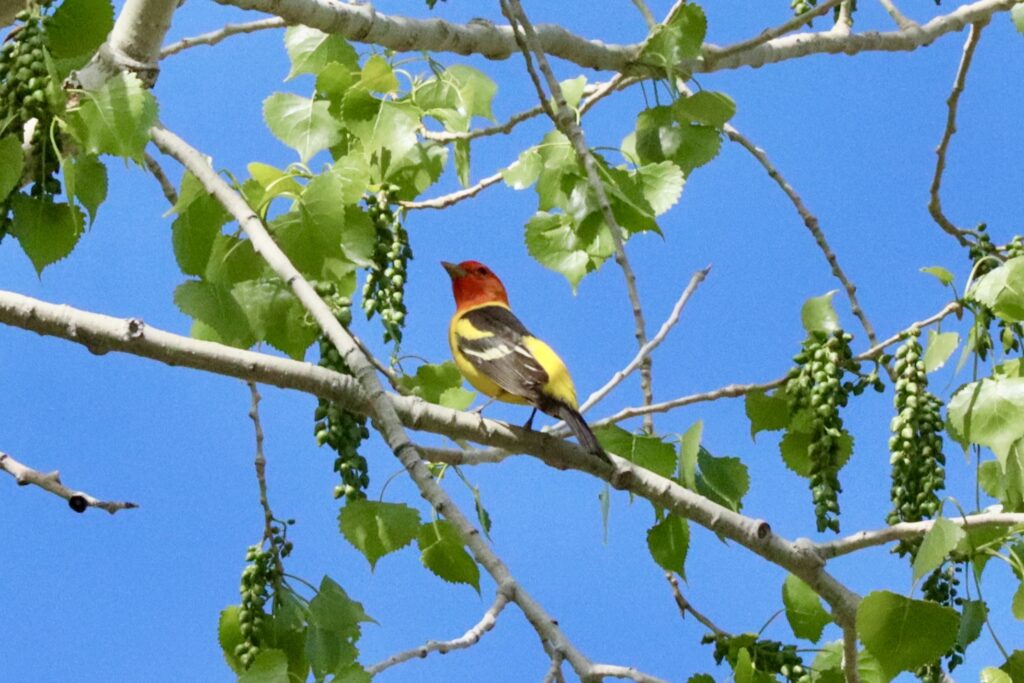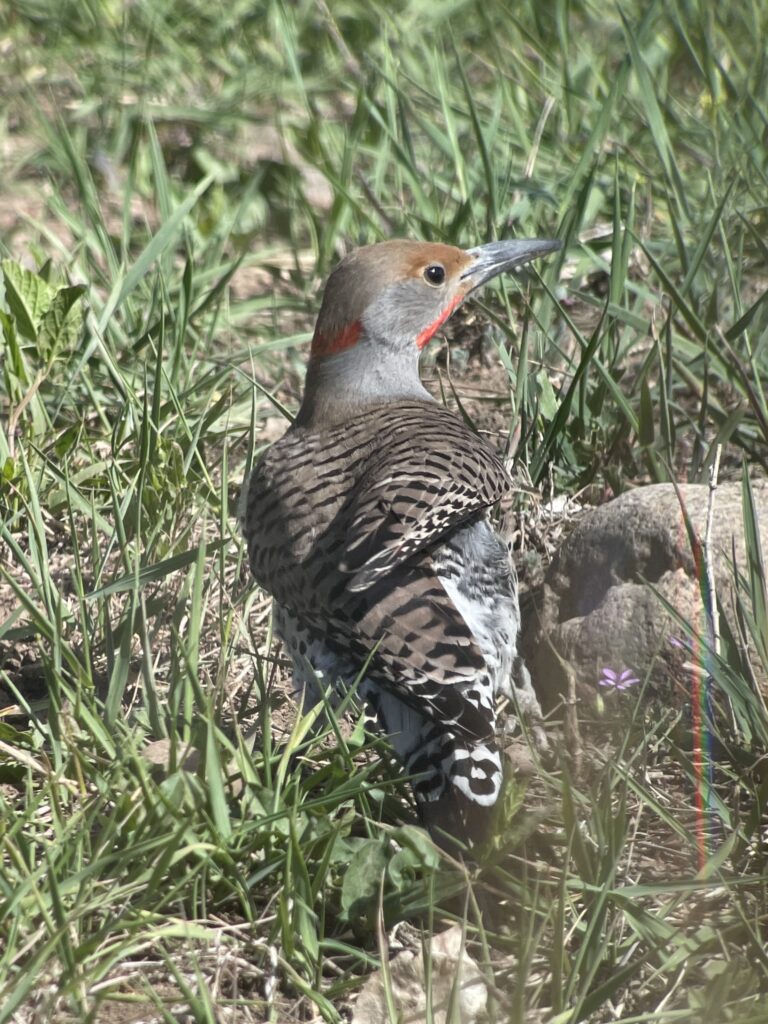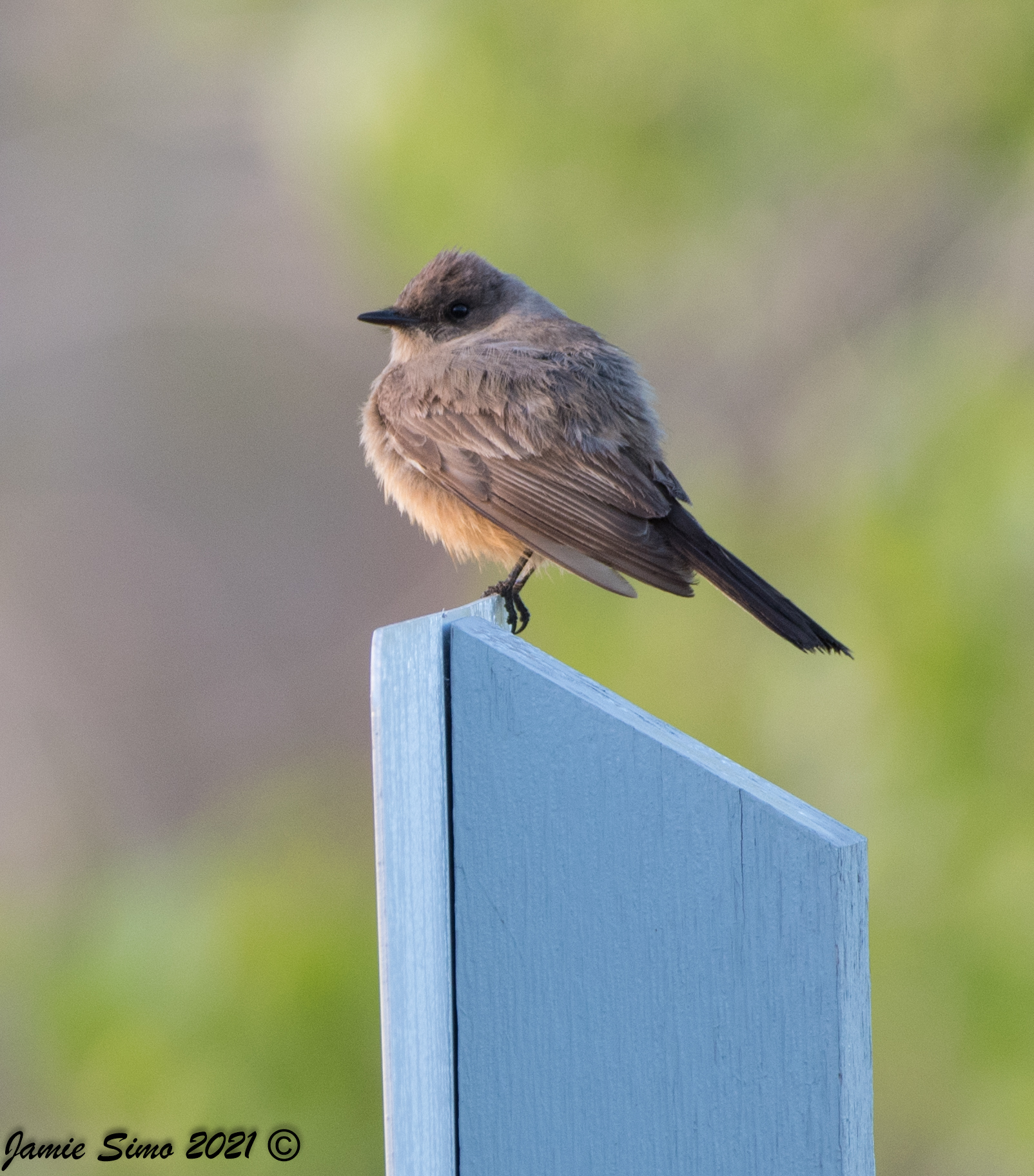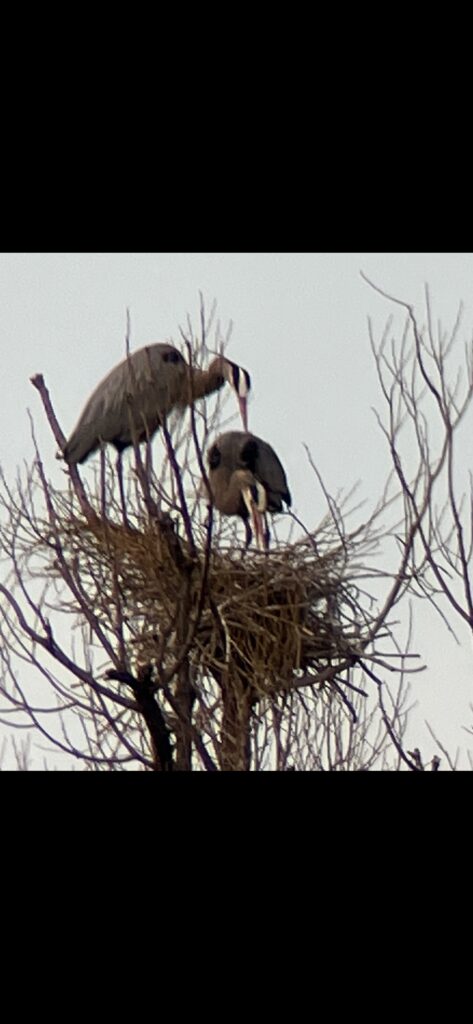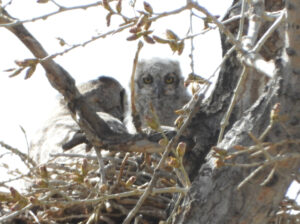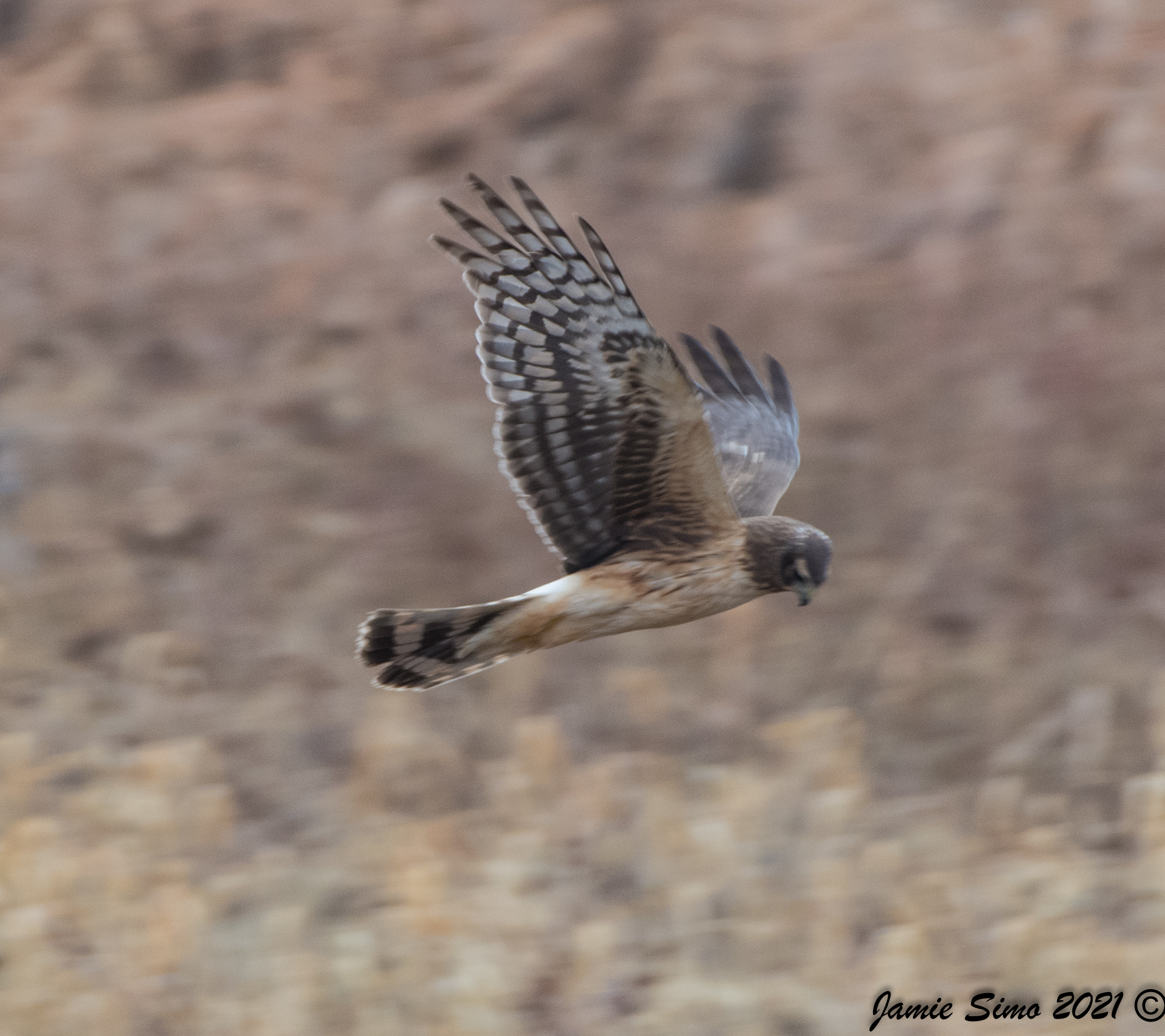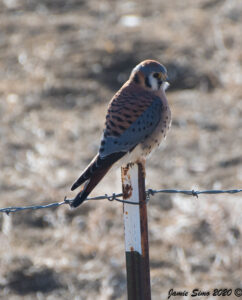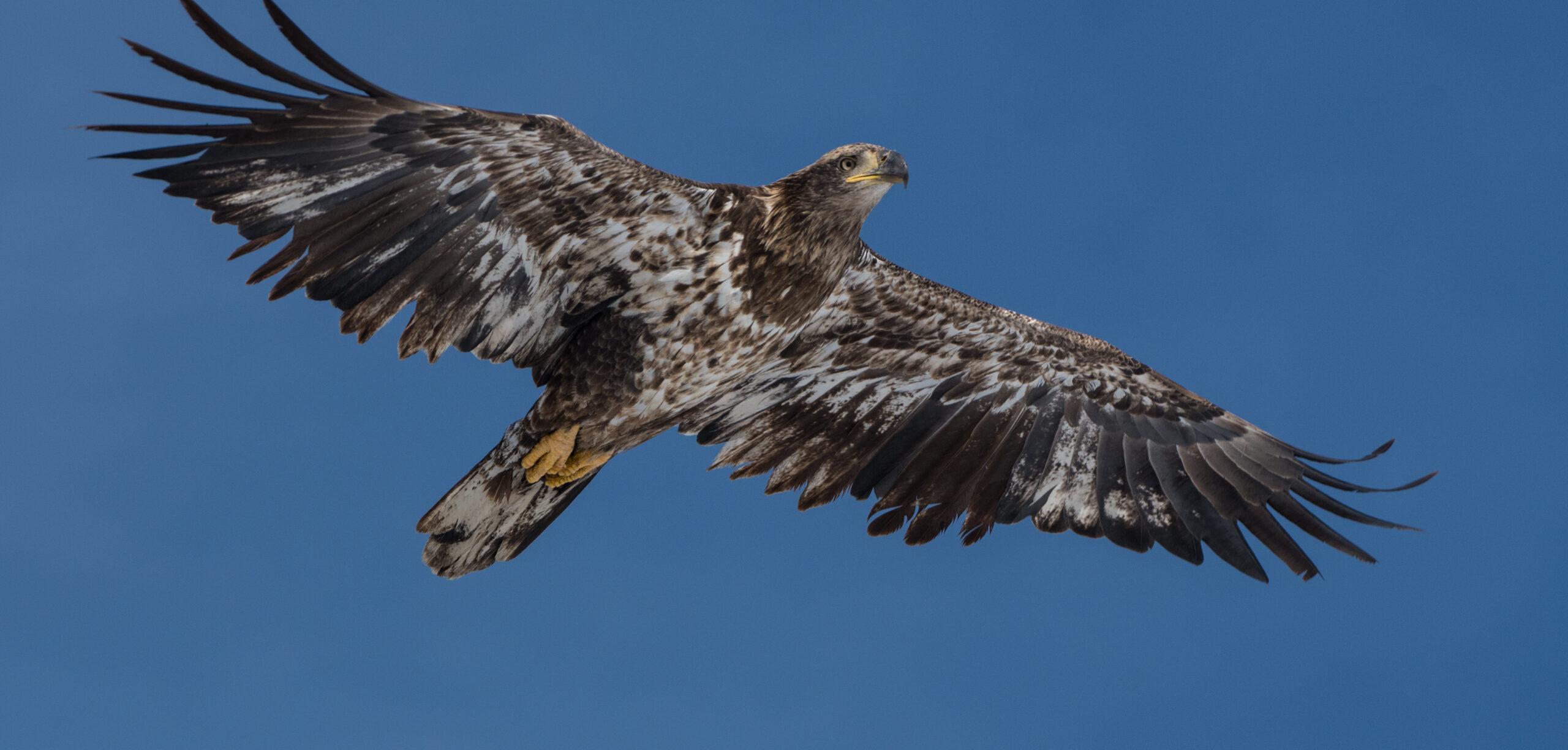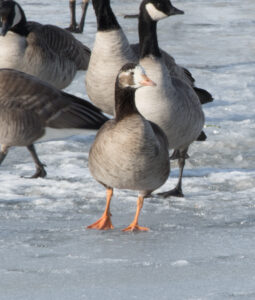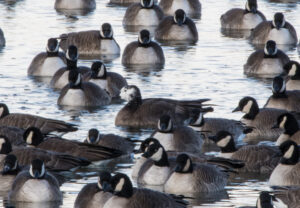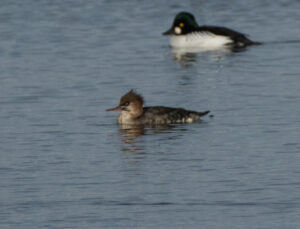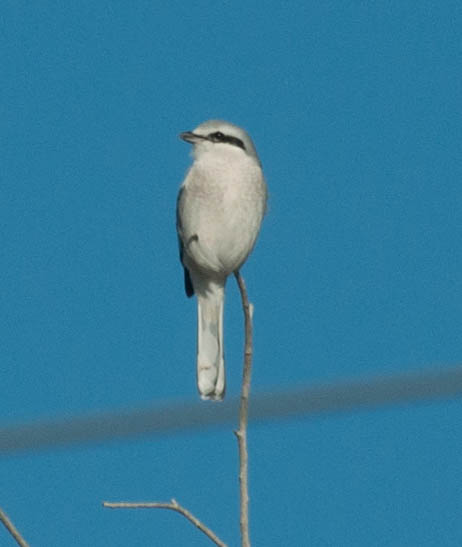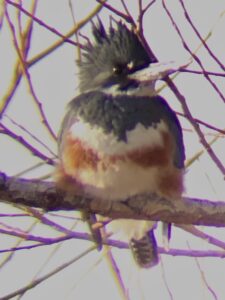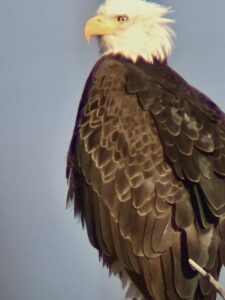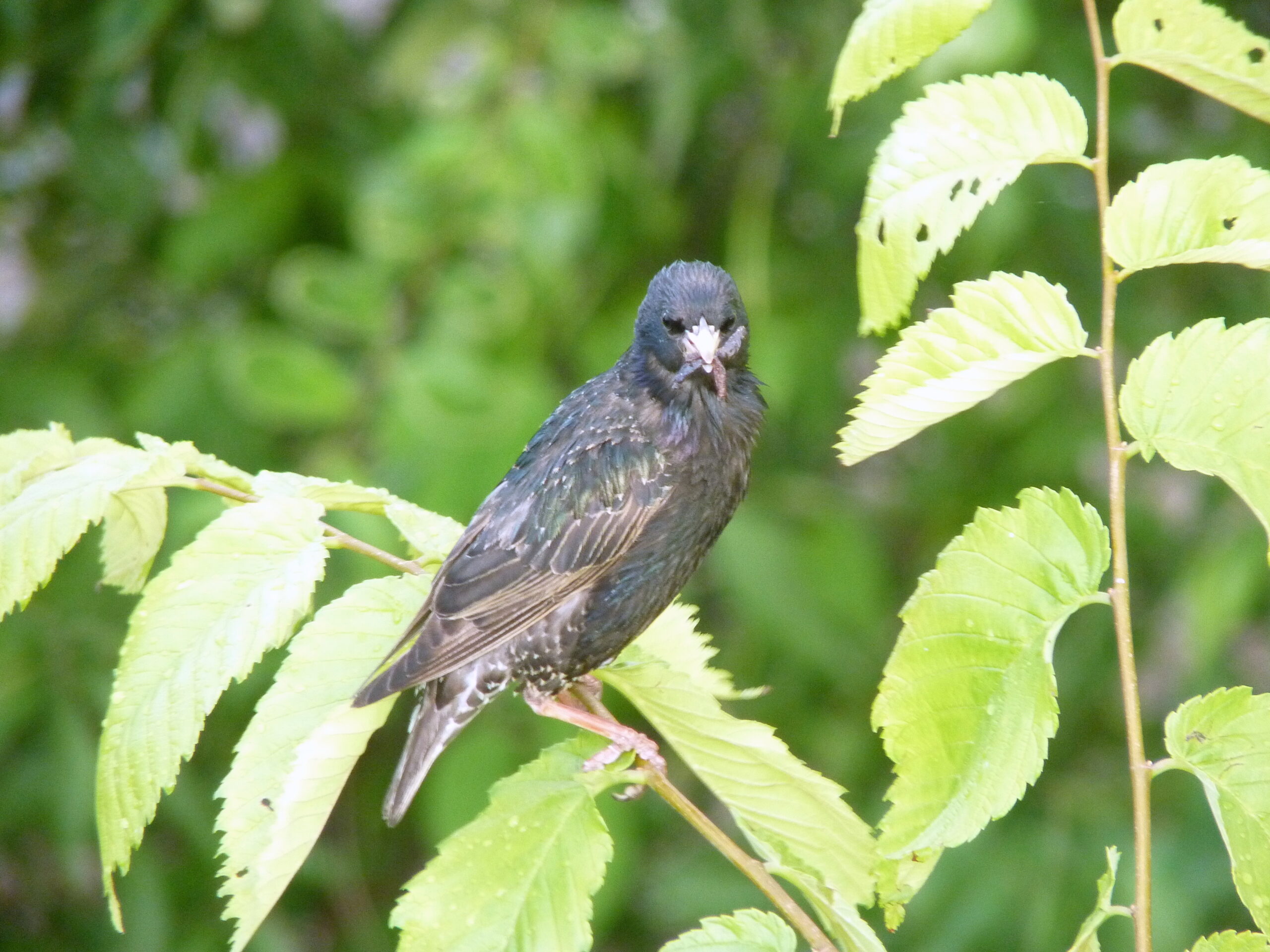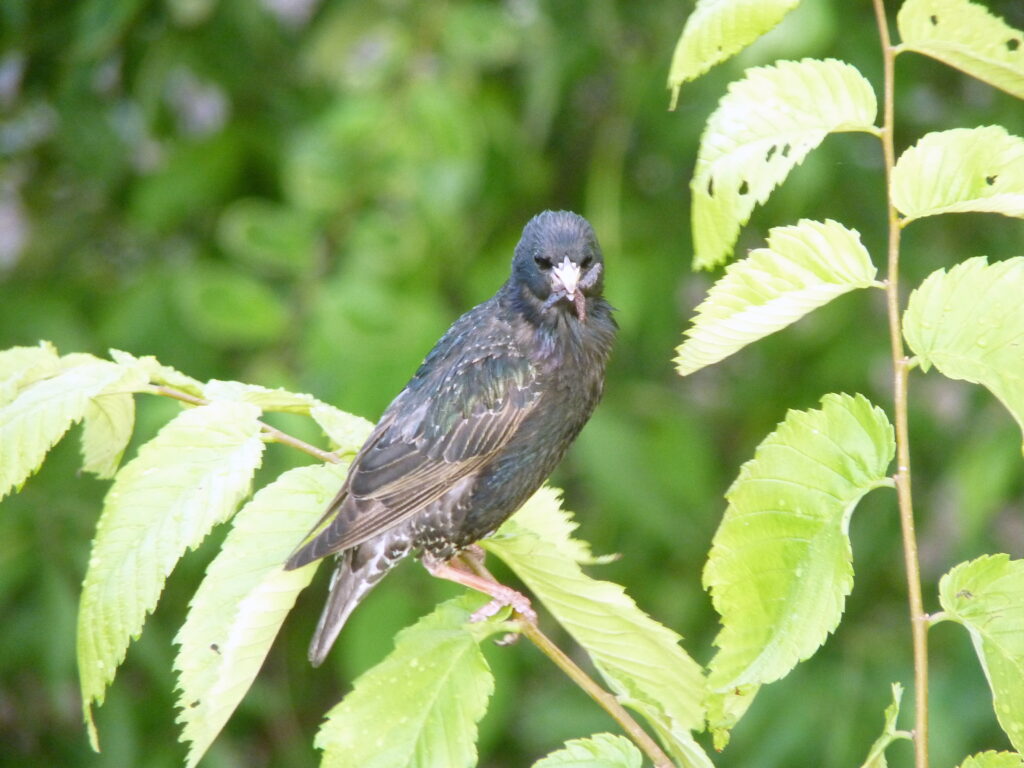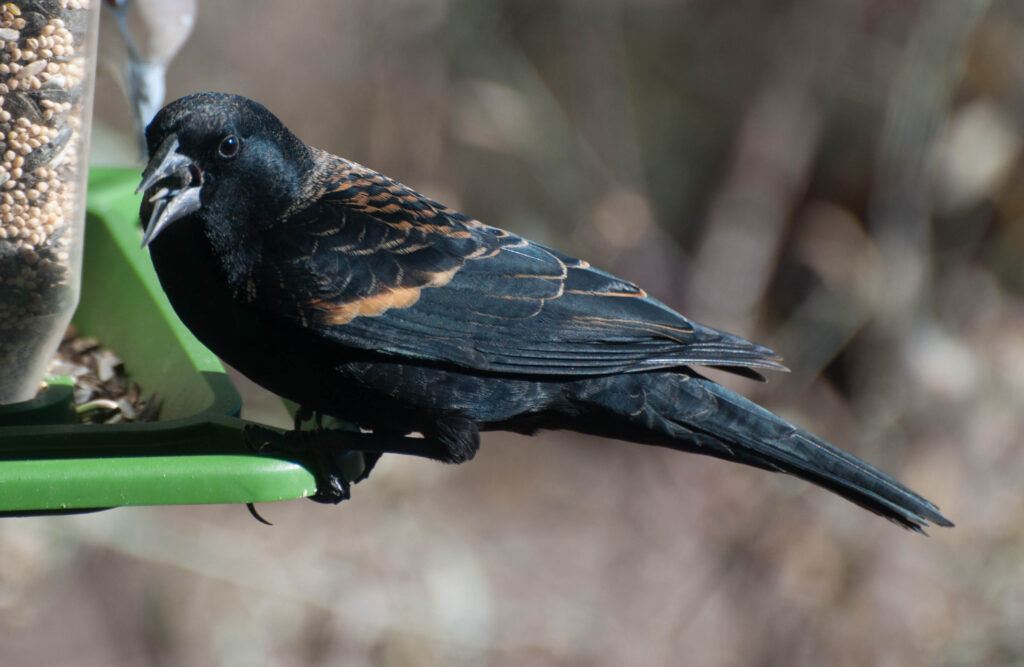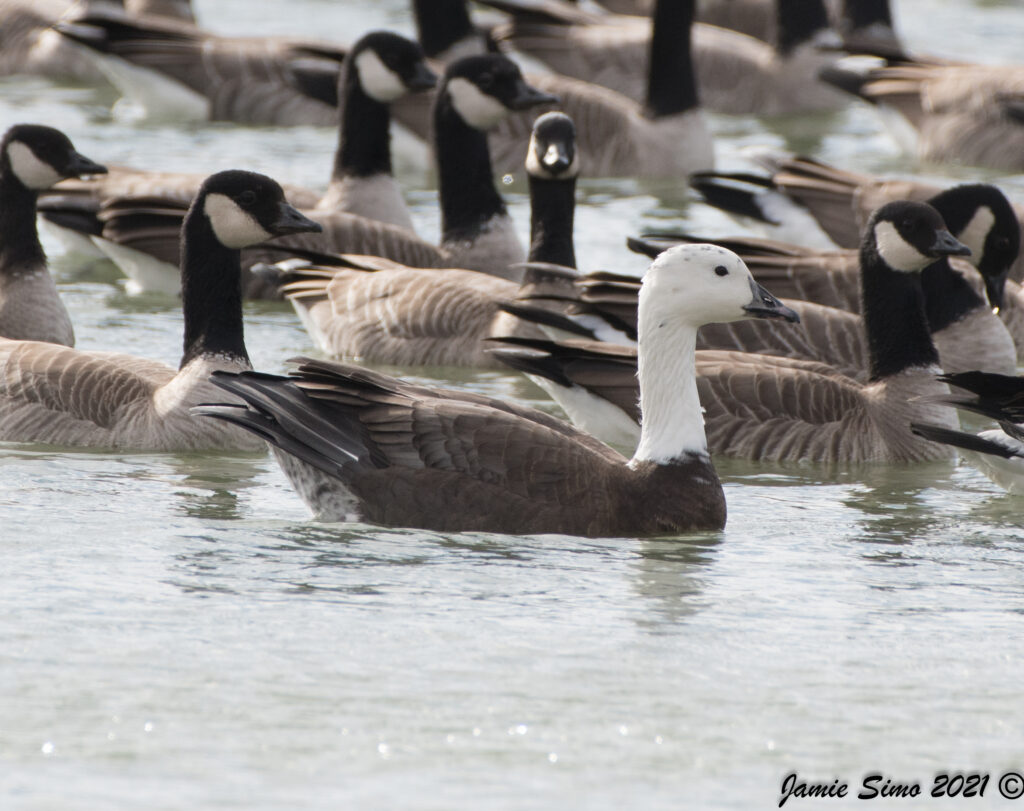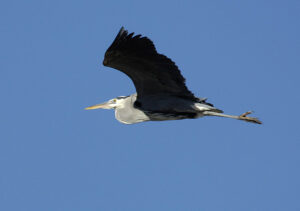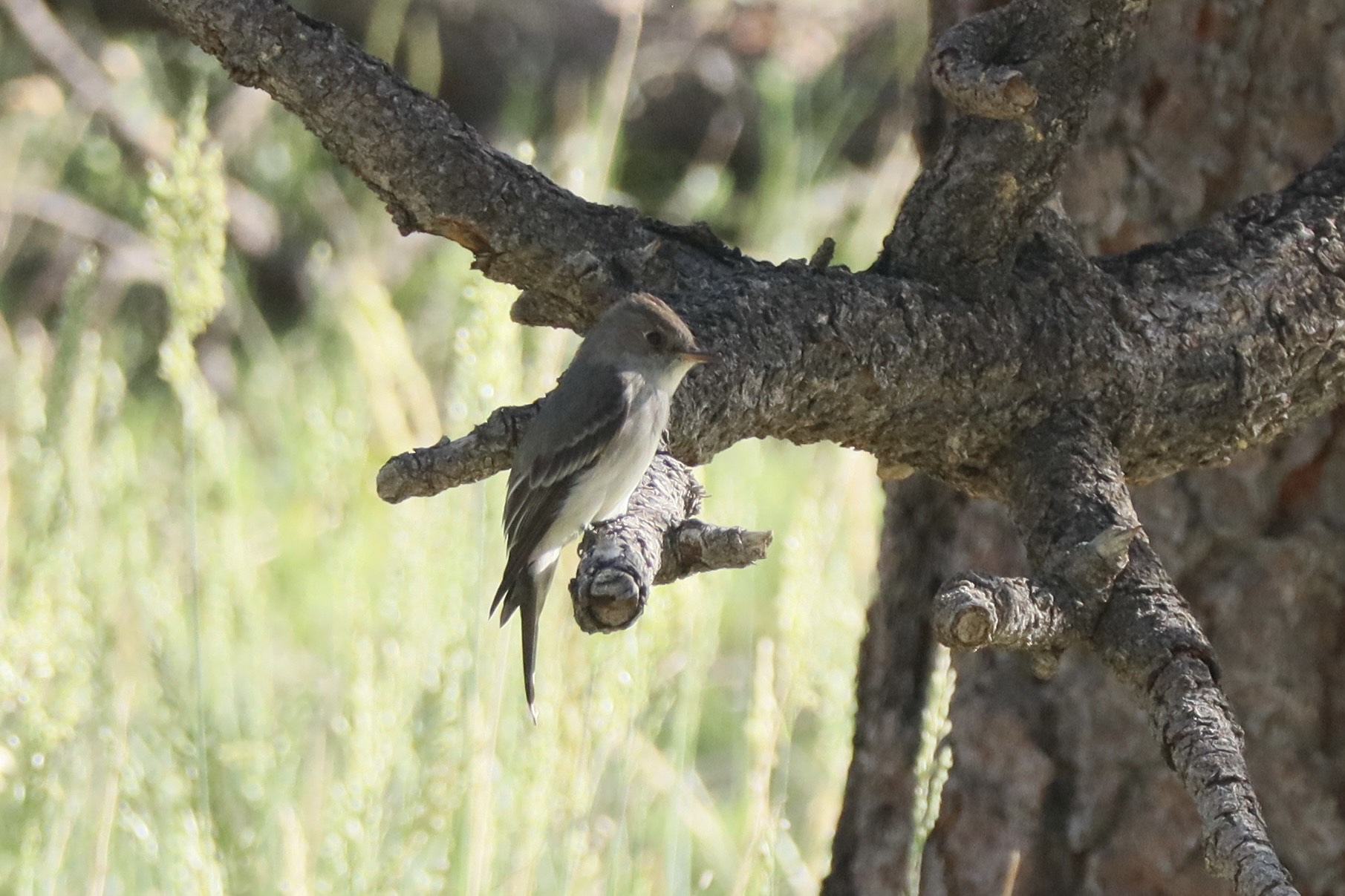
A hot, sunny morning awaited us at Walker Ranch for our June 11, 2022 second Saturday bird outing with Front Range Birding Company Boulder. Walker Ranch is a Boulder County Open Space property located in the foothills at about 7,300’ elevation. The Meyers Homestead Trail follows Meyers Gulch, a drainage that feeds into South Boulder Creek, as it moves through a landscape dominated by open Ponderosa Pine forest. On the day of our outing, everything was verdant with late-spring growth, spurred on by recent snowfall and rain, and a few wildflowers and their attendant butterflies brought a pop of color to the landscape.

Quite a few birds were already in breeding mode, with several species singing and a few species visiting nests. We observed Mountain Chickadees and Western Bluebirds visiting nest boxes, a female Lesser Goldfinch busily constructing her nest in the top of a small conifer, and a Western Wood-Pewee building a nest in a low-hanging branch right over the trail.
Speaking of the nest-building Western Wood-Pewee, we had an interesting debate in the field about whether this bird was in fact a Western Wood-Pewee (in genus Contopus), or one of the very similar small flycatchers in genus Empidonax. One feature this bird showed that was confounding us was a partial white eyering, just a spot behind the eye, which recalled Empidonax flycatchers with less-distinct eyerings like Willow Flycatcher, and the smaller Hammond’s Flycatcher. Wood-pewees usually do not show any eyering at all. But as with field identification in general, it’s best not to rely on any one field mark in order to make a ID – one should evaluate as many lines of evidence as possible and consider which of the possible IDs is best supported by the evidence. This turns out to be very important for visually identifying North American flycatchers, many of which can have overlapping physical features and can be very difficult to ID to species by sight, even in the hand (we talked in the field about how sound is actually the best way to identify North American flycatchers…but our flycatcher in question was silent as it went about its nest-building work).

Rather than plumage features, the structure of our flycatcher was more helpful. Our flycatcher was long and lanky like a wood-pewee, with a deeply notched tail, long undertail coverts and long primary projection/long wings ending about halfway down the length of the tail when folded. It showed a peaked crown most of the time we watched it. We found it building a nest in a habitat where one is less likely to find Willow and Hammond’s Flycatcher breeding and more likely to find Western Wood-Pewee breeding in Colorado: open Ponderosa Pine forest. One plumage characteristic that was more useful than the partial eyering was the gray centers to the otherwise whitish undertail coverts on our mystery bird – this is a feature of wood-pewees that separates them from genus Empidonax. Only one other member of genus Contopus that sports dark centers on the undertail coverts was likely to be at Meyers Gulch that day: Olive-sided Flycatcher. But Olive-sided Flycatcher has a proportionally larger head, heftier bill and a much more prominent dark “vest” on its front than our bird was showing. So, adding up all of the evidence, Western Wood-Pewee it was.

The springtime earbirding at Meyer’s Gulch also did not disappoint. We heard six species of sparrow singing all along the trail: Chipping, Vesper, Song, Lincoln’s, and Green-tailed and Spotted Towhees (towhees are also sparrows). We even caught fleeting looks at some of these sparrows, especially Green-tailed Towhee, although the Lincoln’s Sparrows and Spotted Towhees remained mostly unseen as they sang. Several unseen Warbling Vireos were heard singing along the trail. We even got to hear a few snatches of song from a briefly-seen male Cassin’s Finch, whose song is a simpler, shorter set of warbles than its more common relative, the familiar House Finch, but that still has that finch-y je ne sais quoi. A male Western Tanager was heard singing at one point along the trail, which gave us the opportunity to talk about how their song sounds like a burrier version of the American Robin’s familiar song. Later on, Mr. Tanager graced us with his presence in the top of a tree where we could actually see him and appreciate the pop of color he brought to the springtime landscape as well.
Until next time…let’s go birding!
Sarah
—————————————————————
36 species observed, 107 individuals
Mourning Dove (Zenaida macroura) 1
Broad-tailed Hummingbird (Selasphorus platycercus) 5
Turkey Vulture (Cathartes aura) 2
Red-tailed Hawk (Buteo jamaicensis) 2
Hairy Woodpecker (Dryobates villosus) 1
Northern Flicker (Colaptes auratus) 1
American Kestrel (Falco sparverius) 1
Western Wood-Pewee (Contopus sordidulus) 8
Cordilleran Flycatcher (Empidonax occidentalis) 3
Warbling Vireo (Vireo gilvus) 4
Steller’s Jay (Cyanocitta stelleri) 5
Black-billed Magpie (Pica hudsonia) 3
American Crow (Corvus brachyrhynchos) 3
Common Raven (Corvus corax) 2
Mountain Chickadee (Poecile gambeli) 4
Tree Swallow (Tachycineta bicolor) 1
Violet-green Swallow (Tachycineta thalassina) 1
White-breasted Nuthatch (Sitta carolinensis) 1
Pygmy Nuthatch (Sitta pygmaea) 4
House Wren (Troglodytes aedon) 5
Western Bluebird (Sialia mexicana) 6
Mountain Bluebird (Sialia currucoides) 1
Townsend’s Solitaire (Myadestes townsendi) 1
American Robin (Turdus migratorius) 3
House Finch (Haemorhous mexicanus) 1
Cassin’s Finch (Haemorhous cassinii) 3
Pine Siskin (Spinus pinus) 4
Lesser Goldfinch (Spinus psaltria) 5
Chipping Sparrow (Spizella passerina) 7
Vesper Sparrow (Pooecetes gramineus) 6
Song Sparrow (Melospiza melodia) 2
Lincoln’s Sparrow (Melospiza lincolnii) 3
Green-tailed Towhee (Pipilo chlorurus) 3
Spotted Towhee (Pipilo maculatus) 2
Brown-headed Cowbird (Molothrus ater) 1
Western Tanager (Piranga ludoviciana) 2
View this checklist online at https://ebird.org/checklist/S112711240


